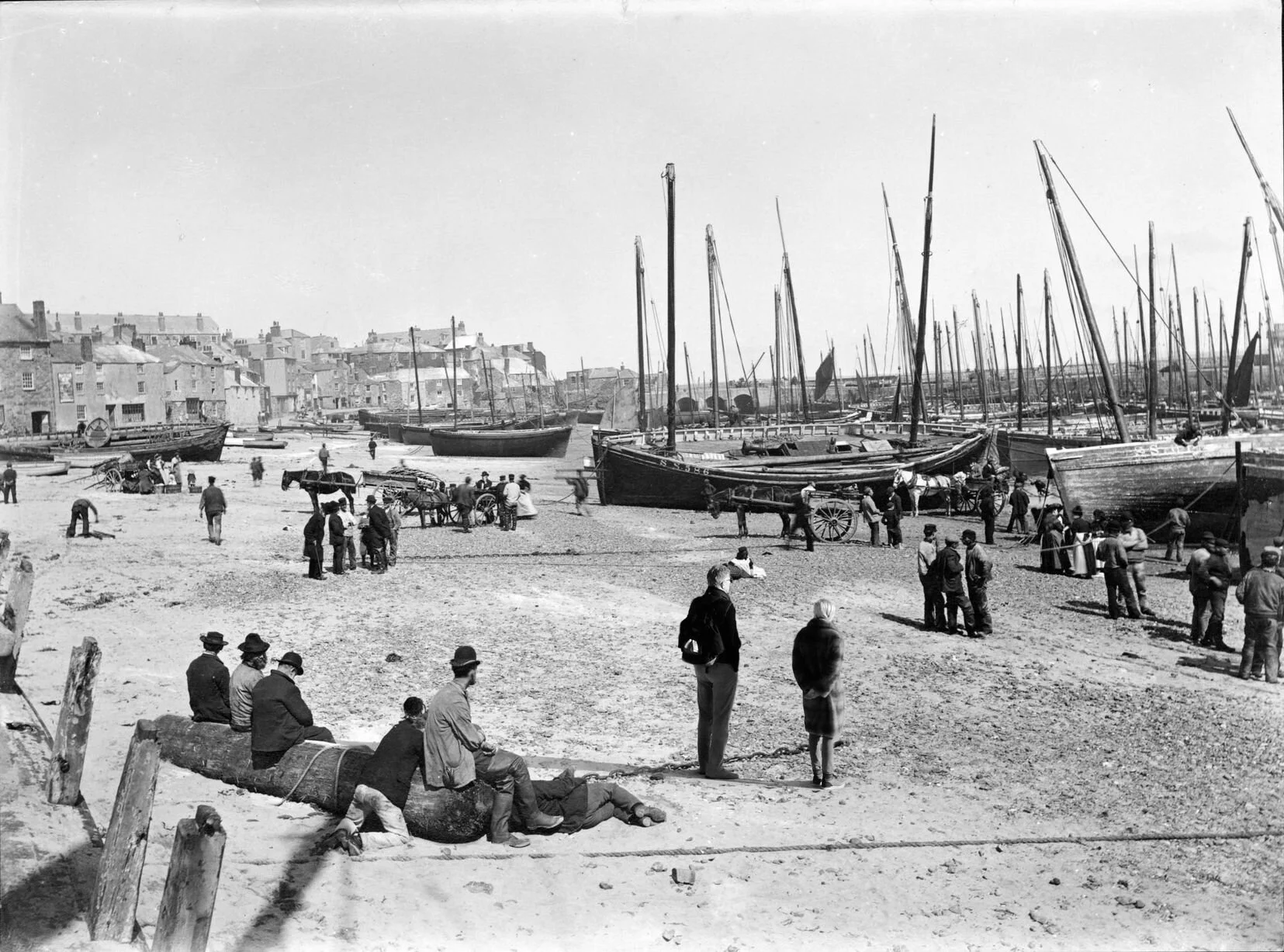Change is the Only Constant

Bamaluz Old Pier, St Ives seeks to stand as a reminder of mutability. Change is the only constant in life. Oil on canvas, this is one of my larger pieces at 80x60cm.
Have you been to St Ives in West Cornwall? Did you visit Bamaluz Beach?
It’s easy to miss. It sits unassumingly behind a wall, between the St Ives Pier East wall and Bamaluz Point. It’s sandy and great for rockpooling at low tide, but is pretty much non-existent when the tide is in. There are fantastic views across St Ives Bay to the lighthouse that inspired Virginia Woolf's literary masterpiece To The Lighthouse.
I haven’t been able to find out a lot about the history of the old Wood Pier. It appears to have been built in 1864 when the local fishing fleet was thriving and there were grand plans to expand the harbour. However, the planners must have underestimated the power of the sea in St Ives Bay as it only survived the storms for about 30 years. All that is left now are the rows of supporting timber stumps which can be seen at low tide.
I love Bamaluz at dawn, when the old posts of the pier emerge from the sea mist like the stumps of rotted teeth. The tide sucks at the fronds of seaweed clinging to each stump. It is a place of gently forgotten decay, haunted by the ghosts of sailors now long dead. To me, the decaying stumps on Bamaluz beach stand as a touching reminder of changing times. This photograph of the fishing fleet in St Ives Harbour, taken around 1903 by Gibson & Sons, is a stark contrast to the decimated fleet of today. You will now see only a handful of boats in the harbour. The Common Fisheries Policy has inflicted huge damage on Cornwall’s fishing fleet.
Does anyone really think that our beleaguered fishing industry will now be given a new lease of life by the Brexit deal? Is it not already simply too late?
(Original photograph of the fleet at St Ives Harbour from Penlee House Gallery & Museum, Penzance.)
